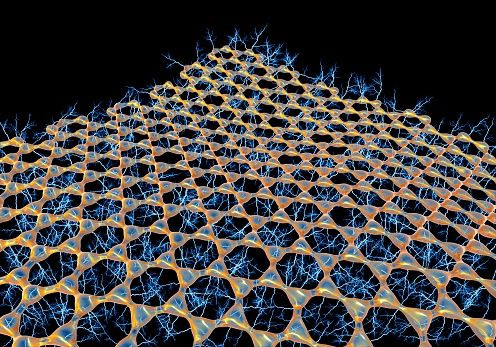Photons Form Cooper Pairs Like Superconducting Electrons: Study

A team of researchers observed photons, constituent particles of light, swapping energy with other photons. They described this as a process similar to how electrons pair up in materials that conduct current without resistance in superconductors.
The team from Universidade Federal de Minas Gerais in Brazil observed photons swapping energy like electrons. The team says the future of their research lies in seeing if photons bound together as electrons. If photons produce an effect similar to superconductivity, it could mean a major breakthrough for electronics and data storage.
"This is a door that is opened," says study co-author Ado Jorio, a physicist at the Universidade Federal de Minas Gerais in a report by Science News. Now, he says, the questions that must be addressed are, "How far can we push this similarity? Can we find with photons incredible results like we find for electrons?"
In the study that has been accepted for publication in the journal Physical Review Letters the team held that in certain solid materials cooled to extremely low temperatures, electrons form partnerships called Cooper pairs, which allows superconductivity. Electrons defy the physics law that like charges repel each other, and bind together by exchanging phonons. They are tiny quantum vibrations that electrons transfer through the lattices of ions in the superconducting materials.
The electrons’ move based on these vibrations. This vibration like movement enables electrons to pass through the superconducting material. There is no resistance when the flow can bypass it through movement.
The team observed the photons in the study behaving similarly to superconducting electrons. The effect was observed when a high power laser was directed at water. The photons from the laser emerged in pairs from the water at the same time. These pairs were calculated to have complementary energies, said the study. "While one photon had lost a little energy, another had gained the same amount of energy, indicating that they were exchanging quantum vibrations. The effect appeared in a variety of transparent materials," Jorio explained in the report, and it was observed at room temperature, unlike electron pairing in superconductors.
According to the report, the team also showed that the exchanged quantum vibrations were "virtual" — appearing only for fleeting moments — just like the vibrations exchanged by electrons. The theory that explains the interaction "is exactly the same as for the electrons," Jorio said.
Previously, the cooper pair effect was not associated with photons. Scientists already knew that photons can lose or gain energy via vibrations but physicist Ian Walmsley of Oxford University said in the Science News report that, "It’s a field that has not yet been explored."
The depth in the similarities between photons and electrons is still unknown as the field of study is still new said physicist Ben Sussman of the National Research Council of Canada in Ottawa, who was not involved with the research. "This is an interesting rabbit hole indeed," he added.
Superconductors can be used in efficient power transmission, super-strong magnets and levitating trains.
© Copyright IBTimes 2024. All rights reserved.





















